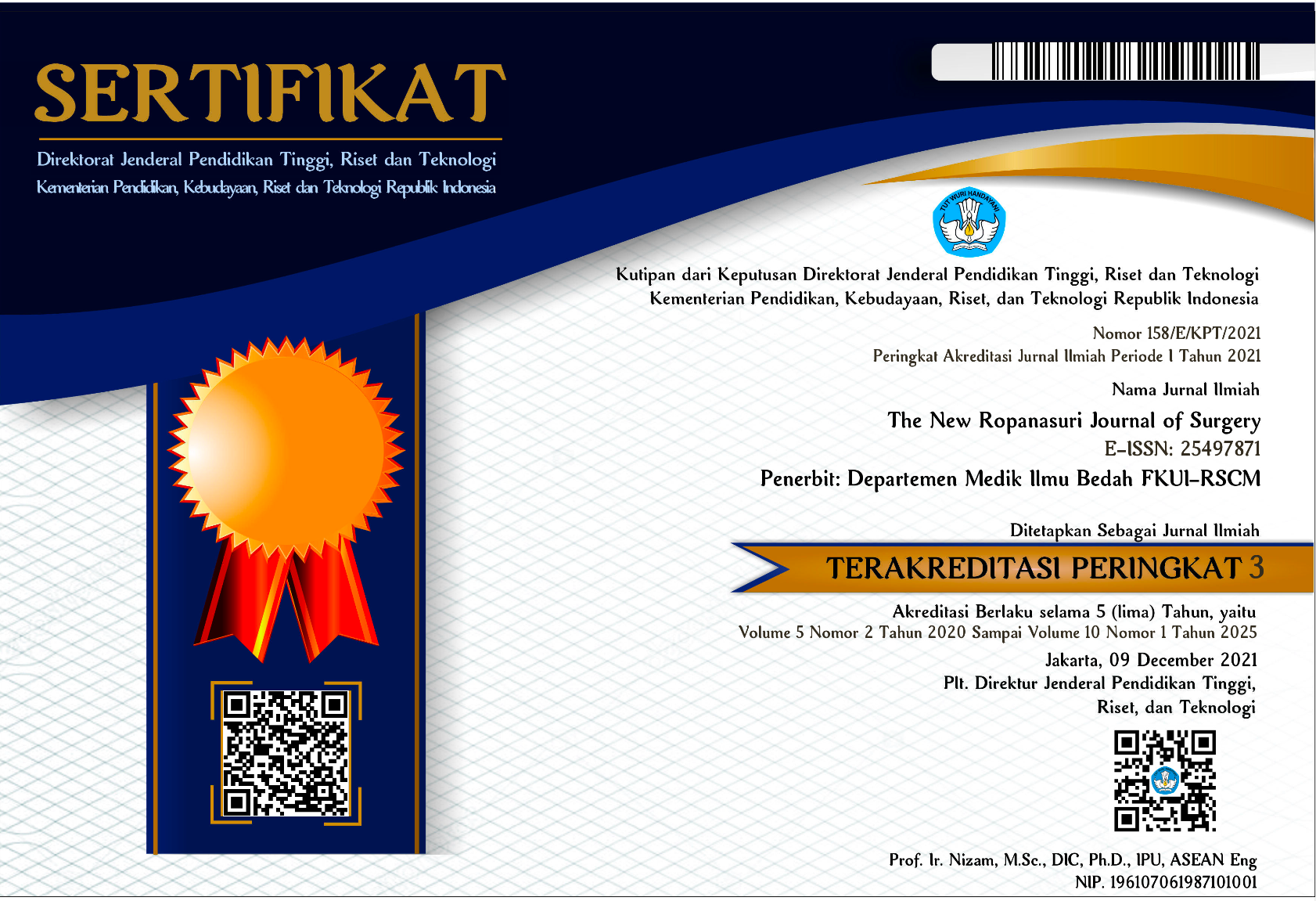Abstract
Introduction. Postmortem changes in pigskin made it difficult to be manipulated as a model for advanced technique in surgery training. The use of bromelain enzyme on these pigskins could be an alternative way to obtain the ideal surgery training model.
Method. Thirty-five pigskin-blocks (10×15cm) was divided evenly into seven groups consisted of six groups of different bromelain enzyme treatment (4g/20min, 4g/40min, 8g/20min, 8g/40min, 12g/20min, 12g/40min) and one group of control. Then five chief-plastic-surgery-residents blindly assessed and scored each pigskin and compared its likeliness to the back of human skin. The scores were then analyzed with an interrater reliability test using SPSS 16.0.
Results. All five assessors unanimously chose the 8g/40min group as the most likeliness to the back of human skin. The highest score was obtained for piercing the needle into the pigskin (8.4 ± 0.54).
Conclusion: The appliance of 8 grams bromelain enzyme in 10×15cm pigskin blocks for 40 minutes was proven to be an ideal surgery training model comparing the back of human skin, especially for tangential excision.
Recommended Citation
Prasetyono, Theddeus O.H; Andrian, Christopher R.; Kinanthi, Elisabet L.A; and Putri, Siti R.K
(2020)
"The Application of Bromelain Enzyme on Pig Skin to be used as Surgery Training Model,"
The New Ropanasuri Journal of Surgery: Vol. 5:
No.
2, Article 6.
DOI: 10.7454/nrjs.v5i2.1095
Available at:
https://scholarhub.ui.ac.id/nrjs/vol5/iss2/6













